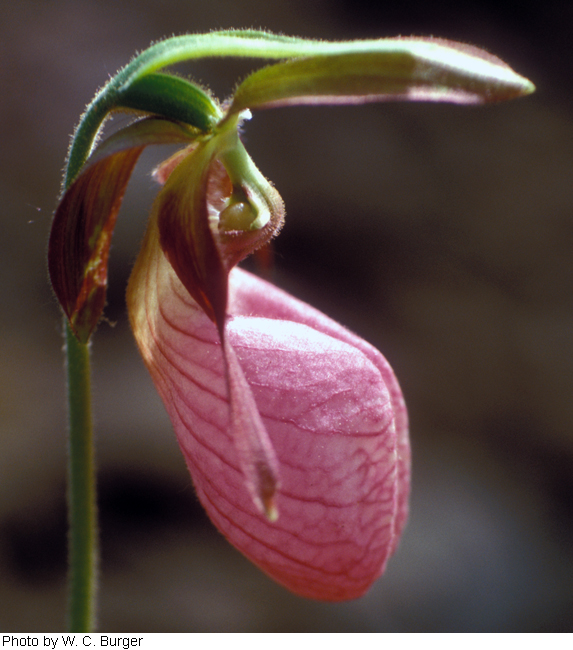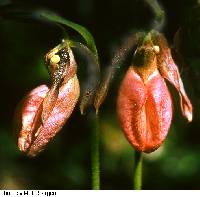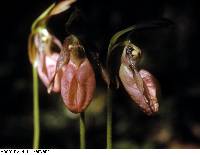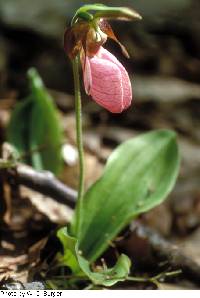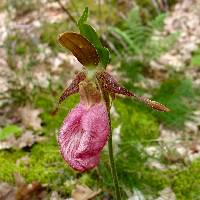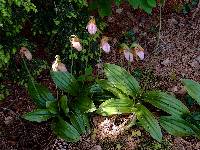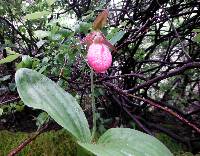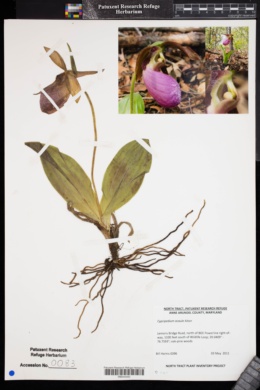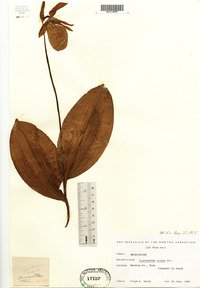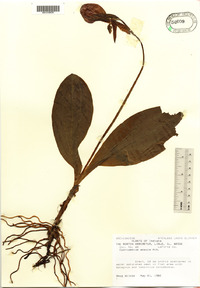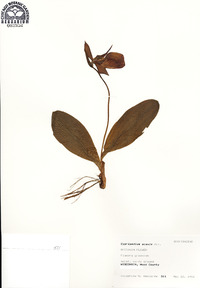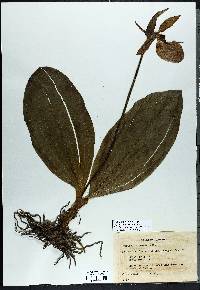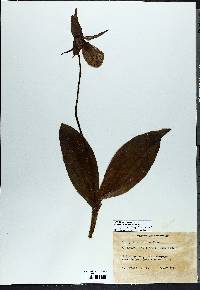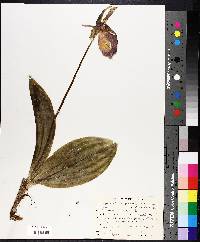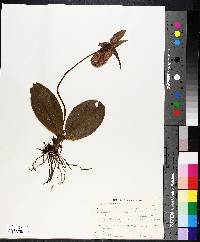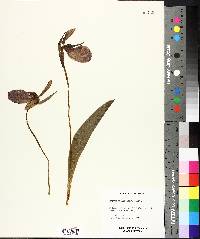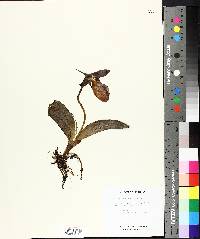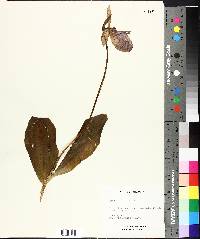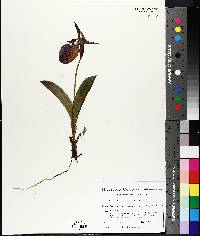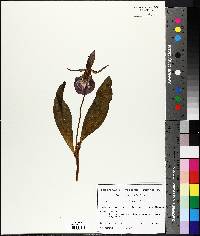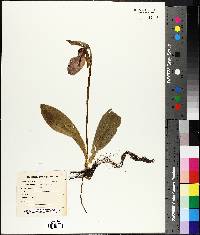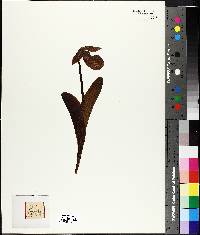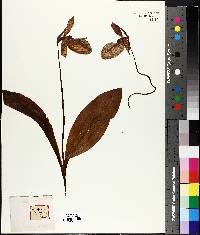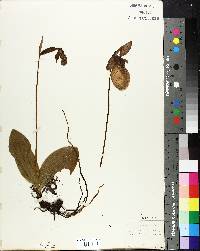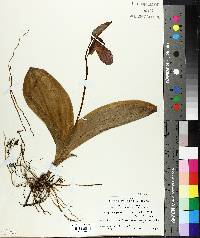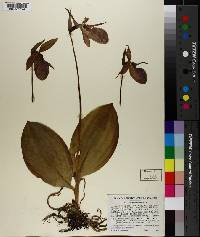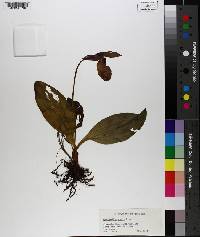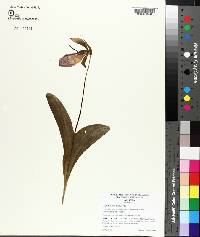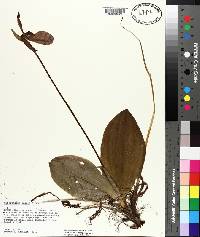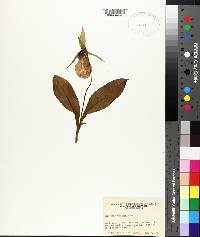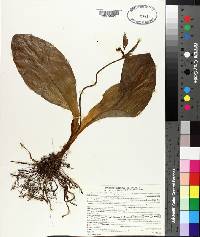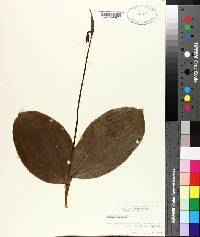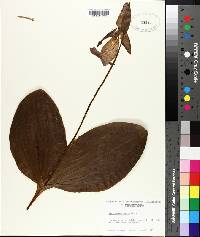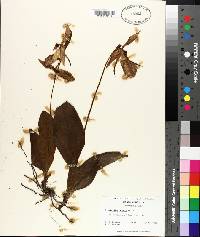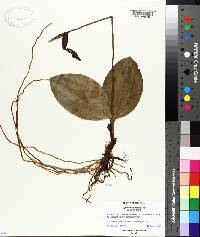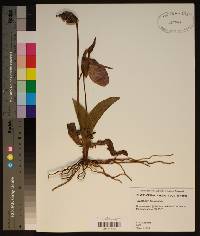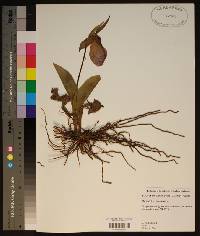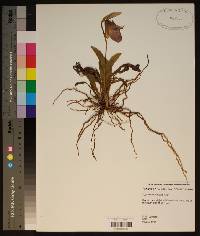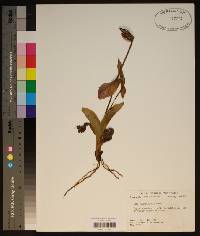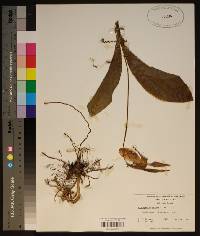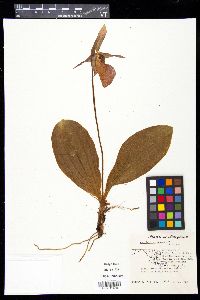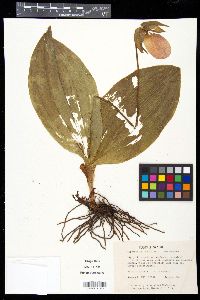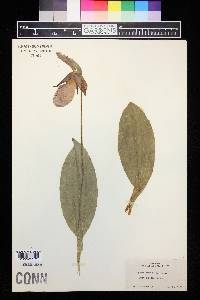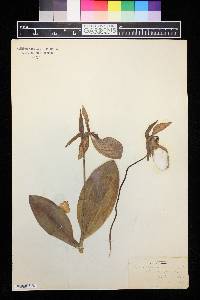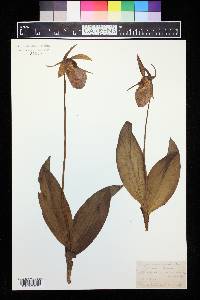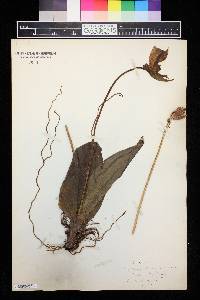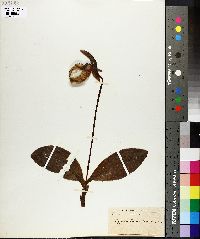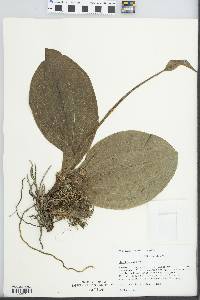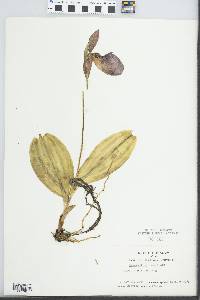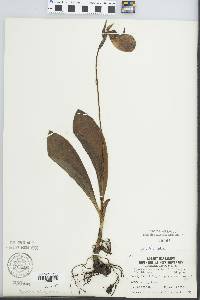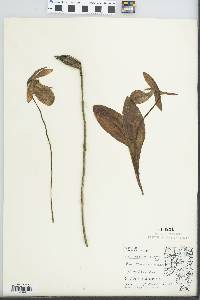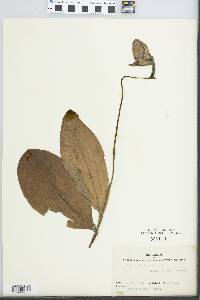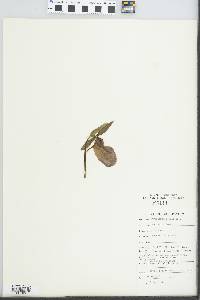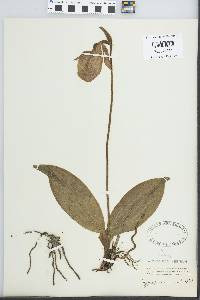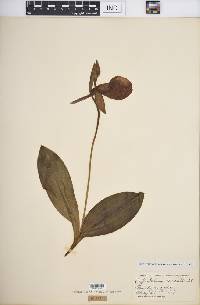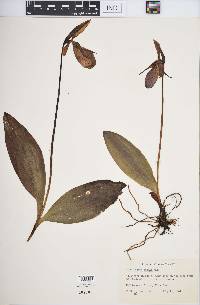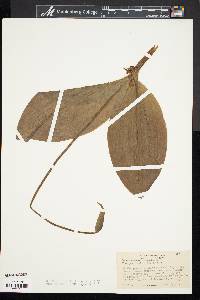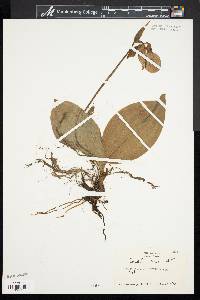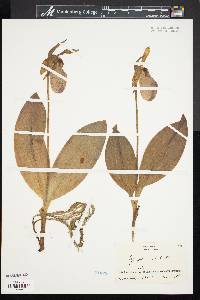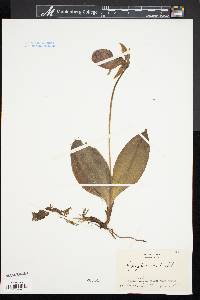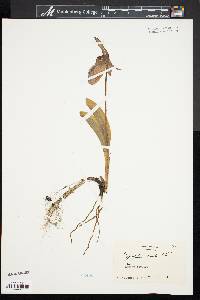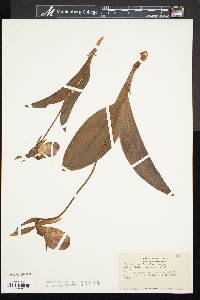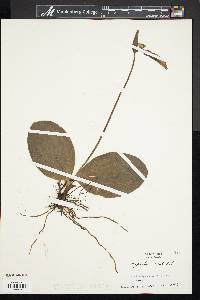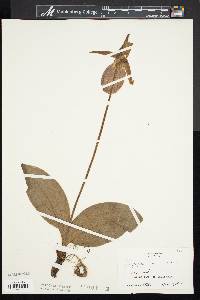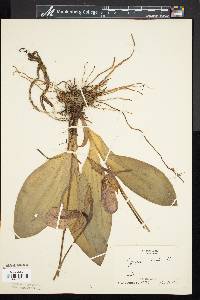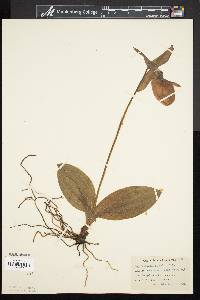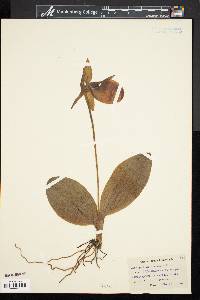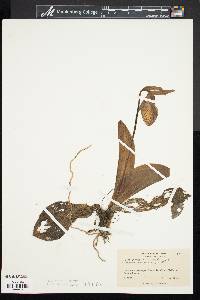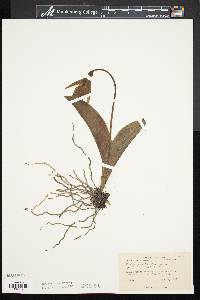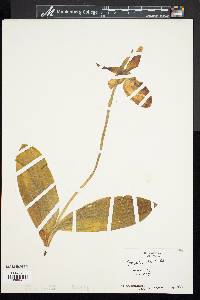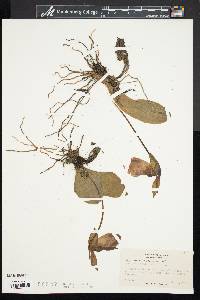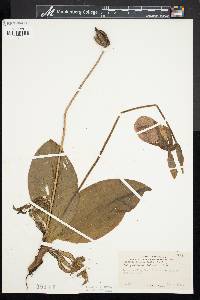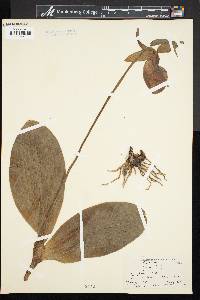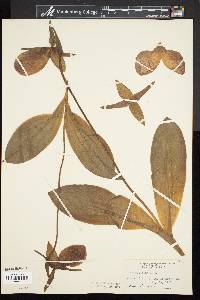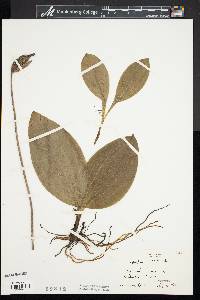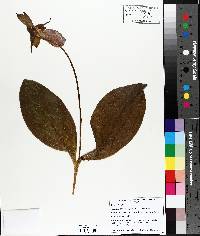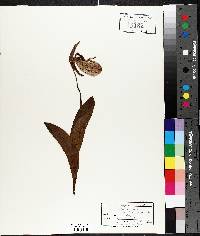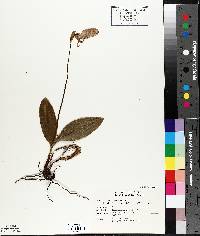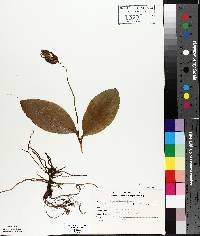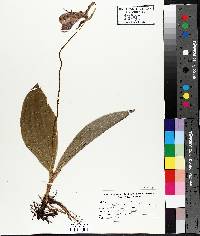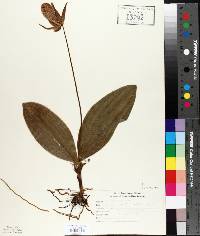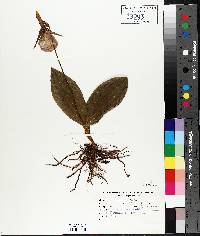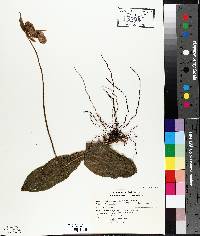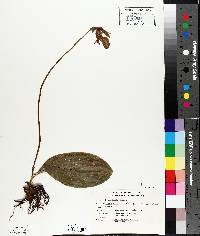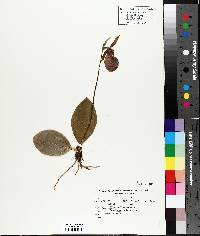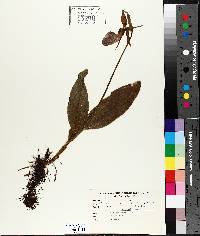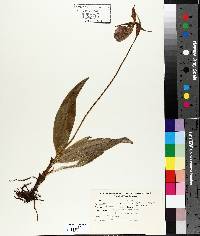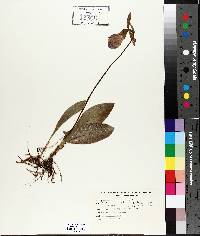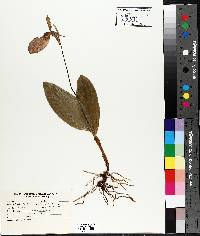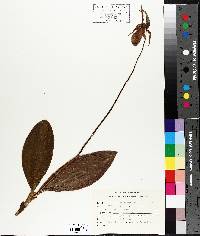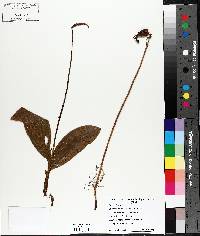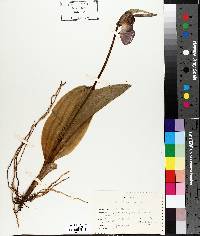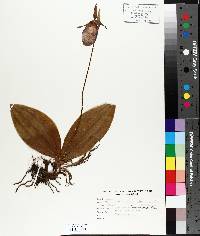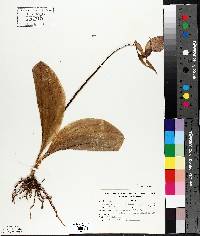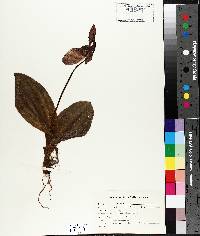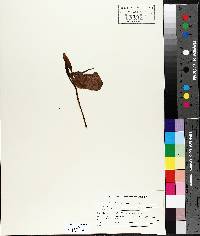
|
|
|
|
Family: Orchidaceae
Pink Lady's-Slipper, more...small pink lady’s-slipper, pink moccasin-flower
[Cypripedium hirsutum, moreCypripedium humile Salisb., Fissipes acualis] |
Plants erect, 15-61 cm; stems leafless scapes. Leaves 2, radical, arising directly from rhizome, ascending to spreading; blade broadly elliptic to oblong-, ovate-, or obovate-elliptic, 9-30 × 2.5-15 cm. Flowers solitary; sepals reddish brown to green; dorsal sepal lanceolate to lance-ovate or elliptic, 19-52 × 5-22 mm; lateral sepals connate, synsepal 17-49 × 6-25 mm; petals deflexed to somewhat spreading, somewhat spirally twisted, same color as sepals, linear- to ovate-lanceolate, 24-60 × 4-17 mm; lip magenta to white, obovoid to oblance-ovoid, 30-67 mm, orifice a longitudinal fissure, length of lip; staminode quadrangular to suborbicular-rhomboid or ovoid-deltoid. 2n = 20. Flowering Apr--Jul. Dry to wet forests, bogs, brushy barrens, heath, and roadsides on highly acidic soil; mostly 0--1200 m; Alta., Man., N.B., Nfld. and Labr. (Nfld.), N.W.T., N.S., Ont., P.E.I., Que., Sask.; Ala., Conn., Del., D.C., Ga., Ill., Ind., Ky., Maine, Md., Mass., Mich., Minn., N.H., N.J., N.Y., N.C., Ohio, Pa., R.I., S.C., Tenn., Vt., Va., W.Va., Wis. Perennial herb 15 - 60 cm tall Leaves: two, ascending to spreading, stalkless, sheathing or clasping the flowering stem so appearing basal, but really arising directly from rhizome. The broadly elliptic to oblong, 9 - 30 cm long, 2.5 - 15 cm wide, non-toothed leaf blades are deeply ribbed lengthwise, green above but shiny silver below, and entirely covered with short, glandular hairs. Inflorescence: of one, erect, terminal, very long-stalked flower closely subtended by a stalkless, green, leaf-like, glandular-hairy, obvious (3 - 4 cm long, 1 - 1.2 cm wide), lance-shaped bract which arches over the ovary and upper sepal like a hood. Sepals: three, but two lower fused together into a 1.7 - 4.9 cm long, 0.6 - 2.5 cm wide, egg- to lance-shaped, purplish red-brown to yellow-green (often with darker veins), glandular-hairy synsepal positioned behind and below lip petal. The remaining sepal is also purplish and covered with glandular hairs, but usually a bit longer (1.9 - 5.2 cm), possibly narrower (0.5 - 2.2 cm), more lance-shaped to elliptic, and positioned above and extending forward over the inflated lip petal. Fruit: a single, erect, 3.5 cm long, ellipsoid, glandular-hairy capsule with remnant reproductive parts at tip, raised lengthwise ridges, and positioned at top of flower stalk with remnant sheathing bract partially enclosing capsule base. Flowering stem: single, erect, tall, glandular-hairy, lacking leaves, but with two leaves at very base arising directly from rhizome. This leafless structure terminated by a flower is called a scape and technically is not a true stem. Root system: of slender, fleshy, fibrous true roots arising from rhizomes. Flower: magenta to reddish brown, showy, glandular-hairy, bilaterally symmetric with narrow lateral petals somewhat spreading sideways above lowest, highly modified, greatly inflated, over 3 cm long lip. Unlike other orchids, the reproductive parts of stamens and stigma are not fused into a column above the inferior ovary, but instead there are two separate anthers, one large, sterile, modified staminode, and a lobed stigma above the inferior ovary. Lateral petals: two, deflexed and spreading above lip, purplish or reddish brown to yellow-green, often with darker veins, glandular-hairy, 2.4 - 6 cm long, 0.4 - 1.7 cm wide, spirally twisted, lance-shaped to egg-lance-shaped, widest at base and long tapering to pointed tips. Lip petal: one, lowermost, inflated, pouch-like, pale lavender-pink to magenta or dark purple-pink (rarely pure white) with darker purple branching veins, glandular hairs, and many hair-like projections on inner surface. This highly modified petal is broadly oblong to egg-shaped, 3 - 6.7 cm long, 3 - 4 cm wide, and has a lengthwise, inward rolled fold running along the top and front surface. Staminode: one, obvious, purplish green, more or less inversely egg-shaped to almost four-angled or rounded, and positioned between upper sepal and curving over base of lip petal. On the back side of the staminode the two anthers are positioned on each side of the central lobed stigma. Similar species: Cypripedium acaule is easily distinguished from our other reddish to whitish Cypripedium species by its lip opening (orifice), which is a full lengthwise infolded fissure along the top and front surface of the lip where as the other species have an opening only at the lip base. In addition, C, acaule has a leafless scape, not a leafy stem as in C. reginae and the white-flowered C. candidum. The other species with maroon flowers is C. arietinum, but in addition to the other two distinctive features, it is also much smaller than C. acaule, and has three separate, distinct sepals. If there are no flowers, but only leaves present, C. acaule could be confused with Galearis spectabilis, Platanthera hookeri or P. orbiculata and even the two species of Liparis, but in all of those species the leaves are hairless, and aside from the main midrib they lack other lengthwise ribs. Flowering: May to late June Habitat and ecology: Rare, preferring somewhat sterile, acid soil, found usually in shaded, drier areas of intensely acidic sphagnum bogs. Occurence in the Chicago region: native Notes: Cypripedium acaule has quite a wide distribution in the northeastern United States, but is very uncommon in our area, which likely has to do with the current scarcity of sphagnum bogs. The glandular hairs of this, and other species of Cypripedium are very irritating to the skin and can cause similar symptoms as a severe poison ivy reaction. Etymology: Cypripedium comes from combining the Greek word Kypris for Cypris (Aphrodite), the goddess of love and beauty; and either the Latin word pedis meaning foot, or possibly an orthrographic error for the Greek word pedilon meaning sandal or slipper; together translating roughly to beauty's or lady's foot or slipper, in reference to the inflated lip petal resembling a woman's slipper or shoe. Acaule means without a stem, in reference to this species not having a true stem, only a rhizome (underground stem) and scape (erect leafless flowering stalk). Author: The Field Museum Lvs 2, basal, subopposite, narrowly elliptic, 1-2 dm, thinly hairy, pale beneath; scape 2-4 dm, hairy, with a single lanceolate bract arching forward over the solitary fl; sep and lateral pet yellowish-green to greenish-brown, lanceolate, 3-5 cm, the 2 lower sep united; lip drooping, pink with red veins, 3-6 cm, hairy within, cleft along the upper side from the basal orifice to the summit, the inturned margins in contact; 2n=20. In acid soil, from swamps and bogs to dry woods and sand-dunes; Nf. and Que. to Alta., s. to N.J. and n. Ind., and along the mts. and coastal plain to S.C. and Ala. Apr.-June. (Fissipes a.) Gleason, Henry A. & Cronquist, Arthur J. 1991. Manual of vascular plants of northeastern United States and adjacent Canada. lxxv + 910 pp. ©The New York Botanical Garden. All rights reserved. Used by permission. From Flora of Indiana (1940) by Charles C. Deam This species is found only in the sphagnum bogs of northern Indiana. In addition to the counties shown on the map it has been reported from Lake County. Its habitat occurs in all of these counties and also did occur in Marshall and Starke Counties, but the report from Monroe County by Andrews must be an error. It was formerly a common plant and showed great variation in the size and shape of its leaves. Since its habitat is restricted, and our sphagnum bogs are fast disappearing, it will soon become rare in our state. |
|
|
|

